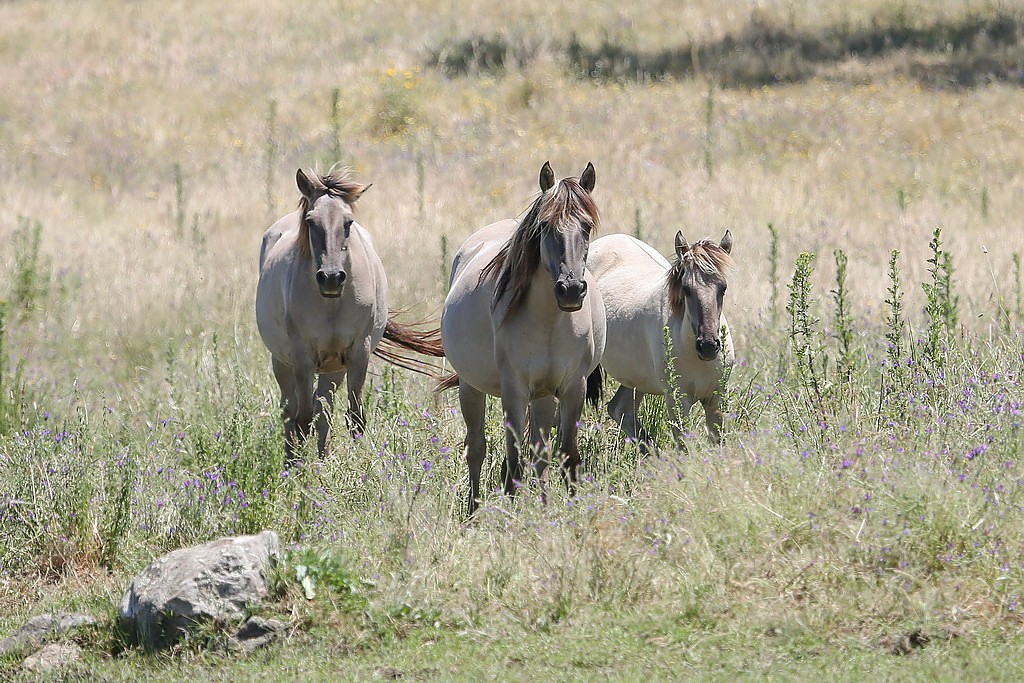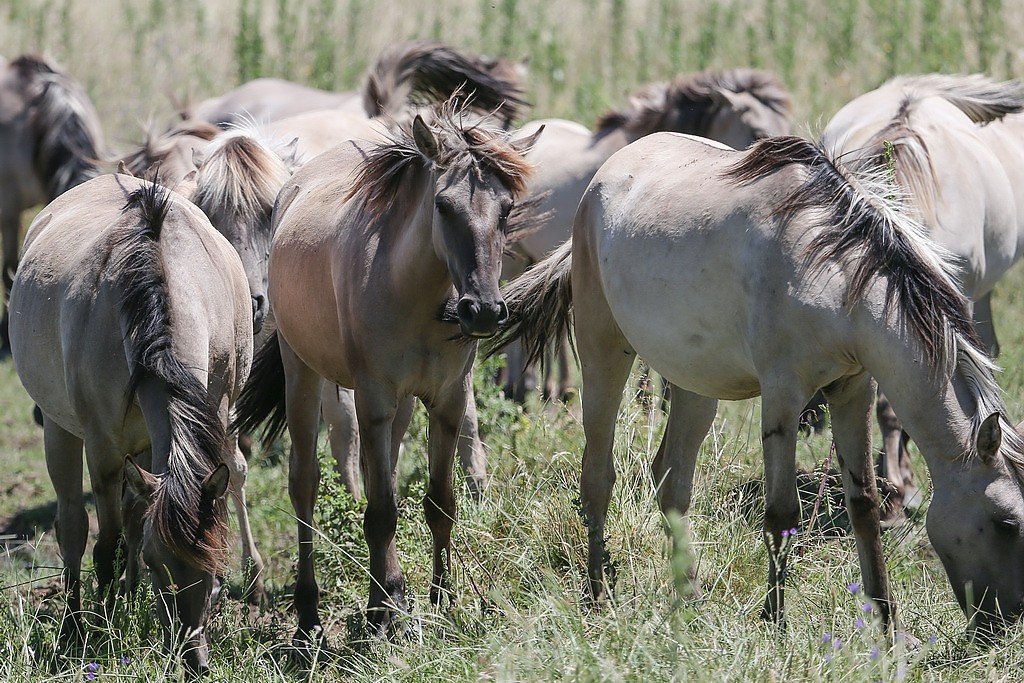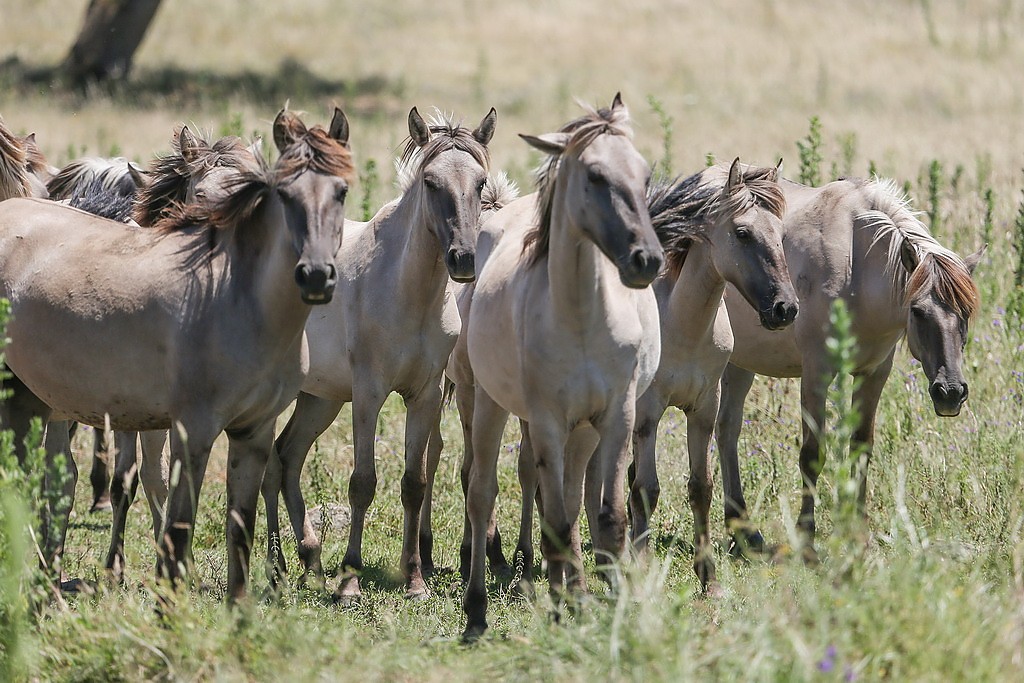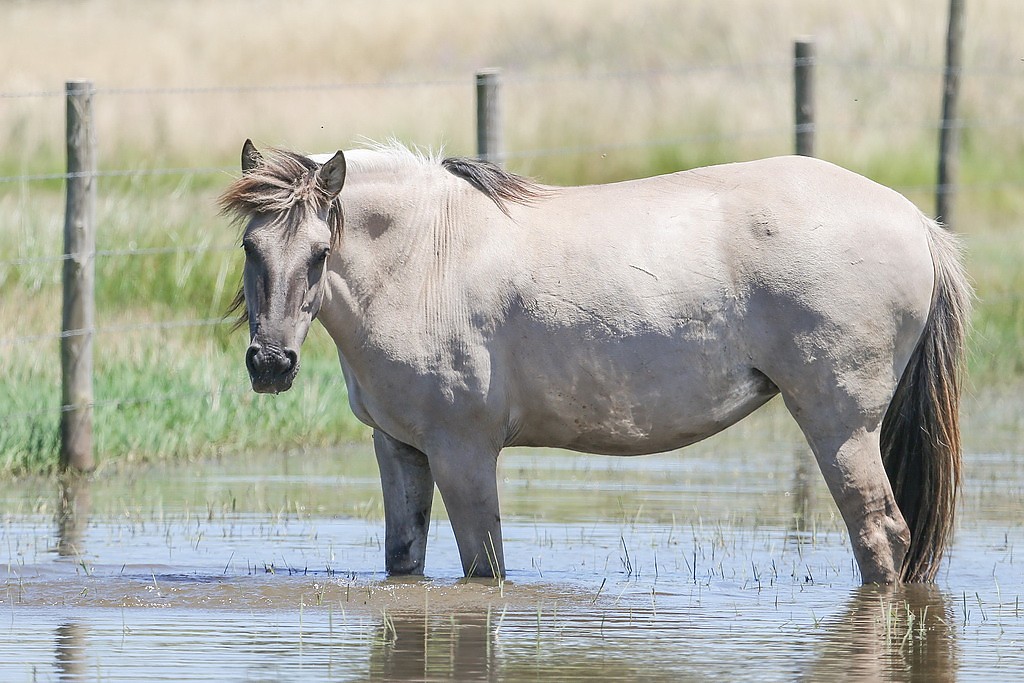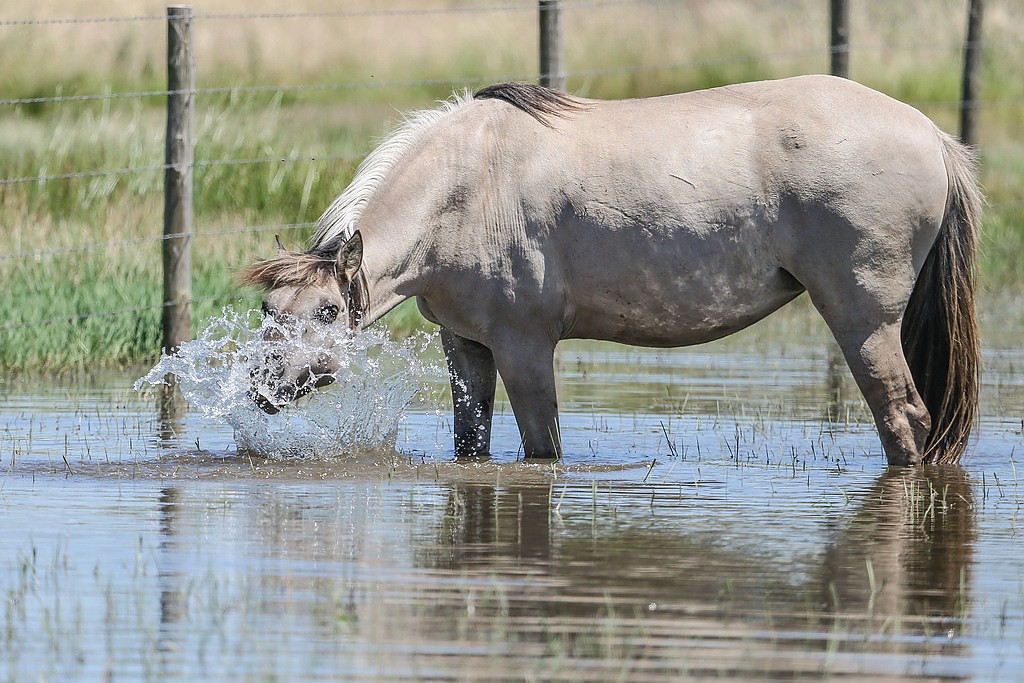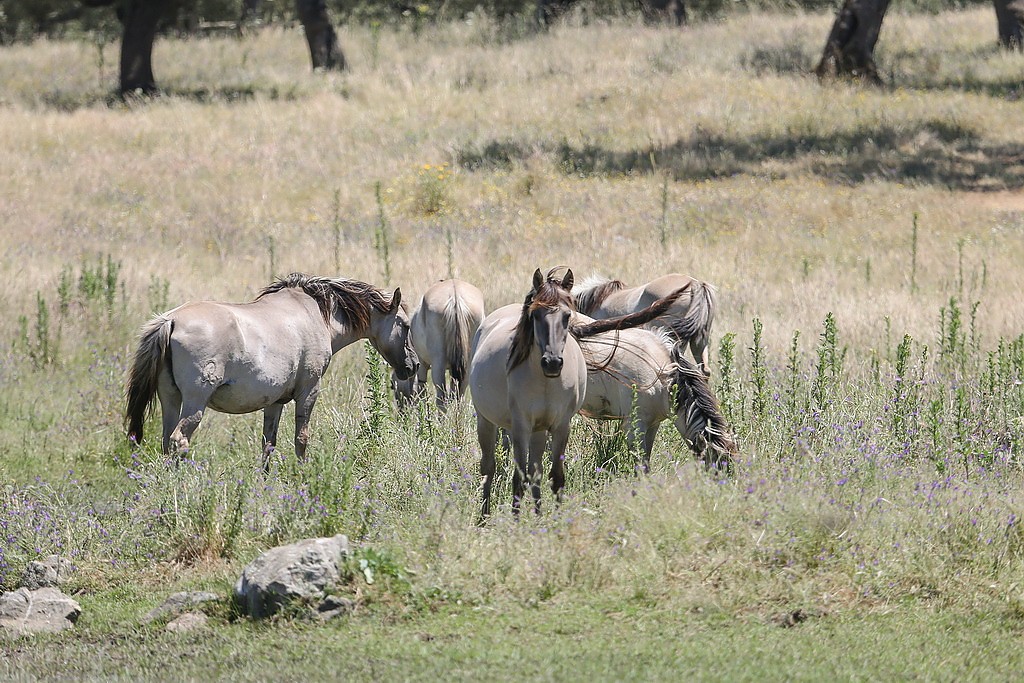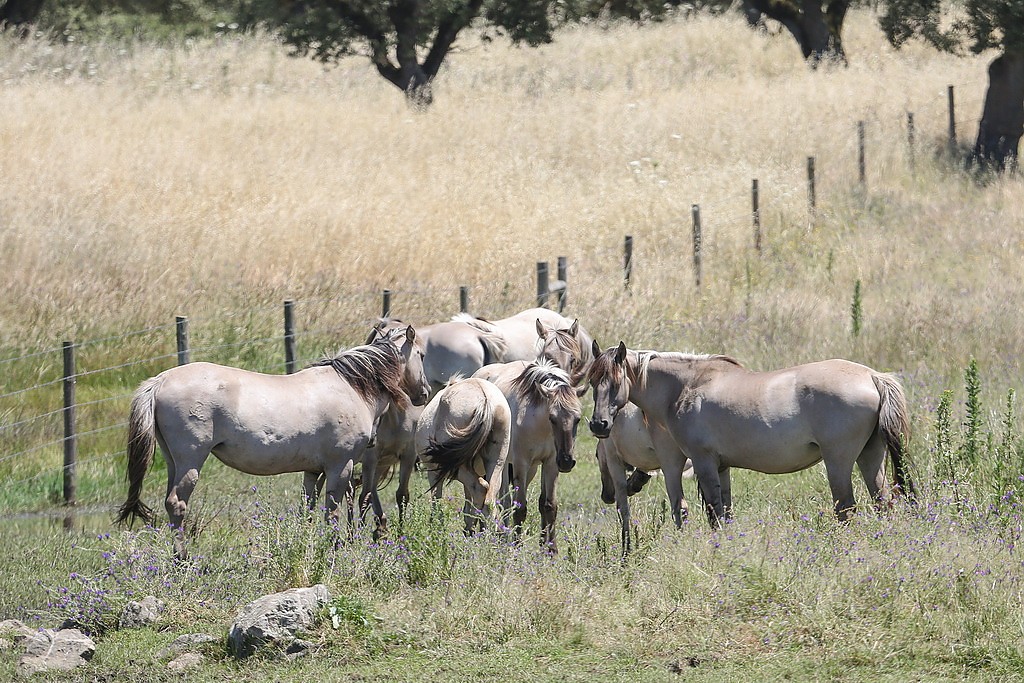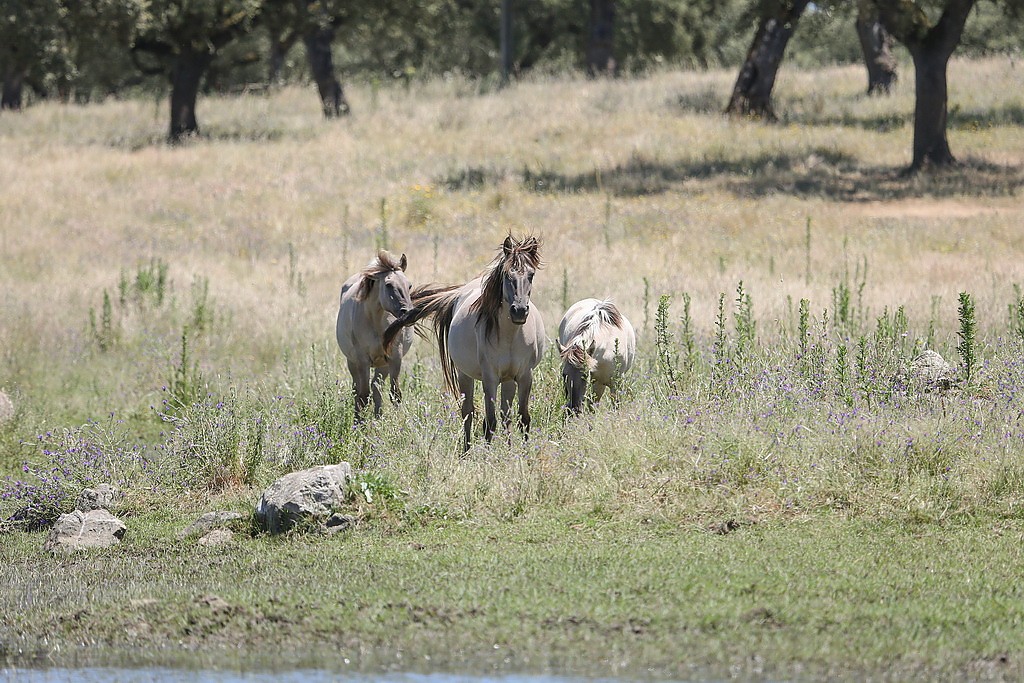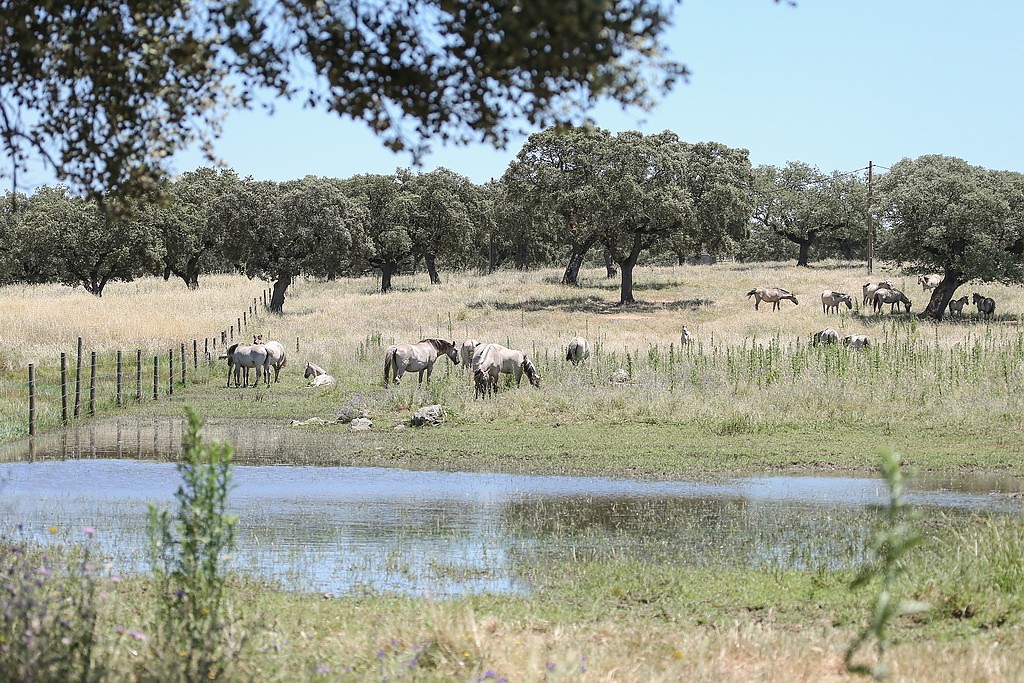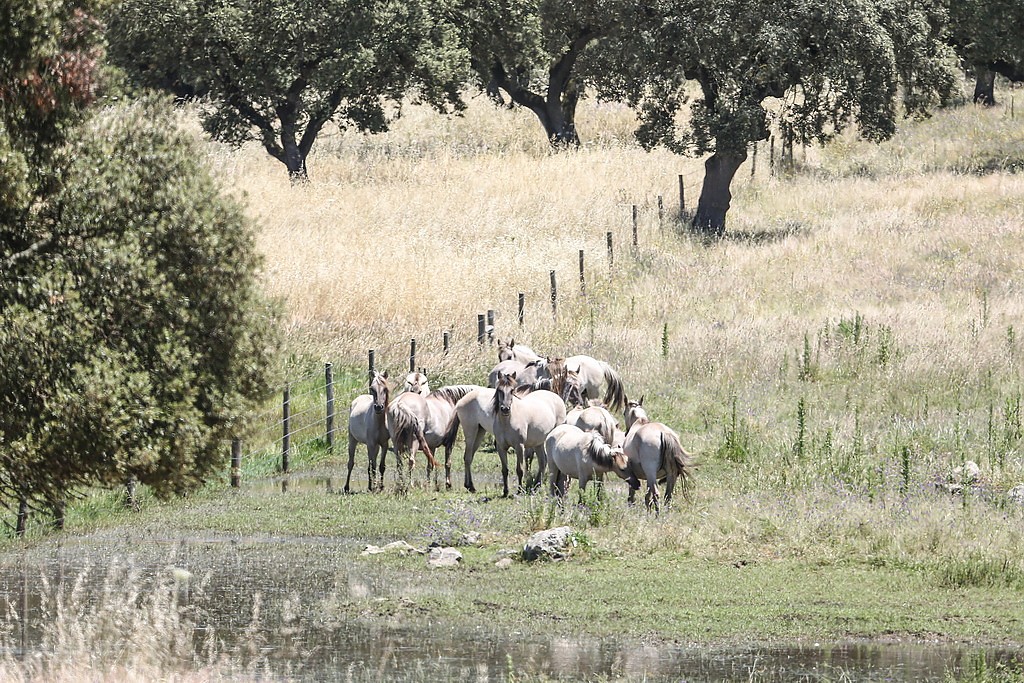Sorraias
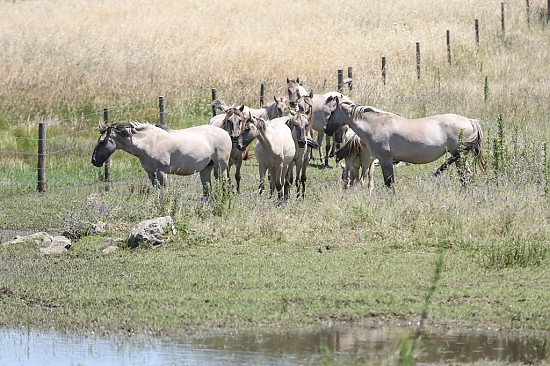
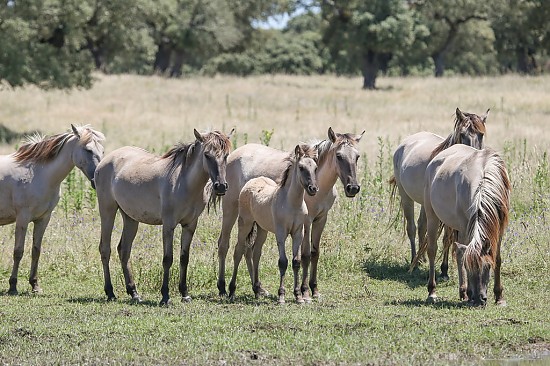
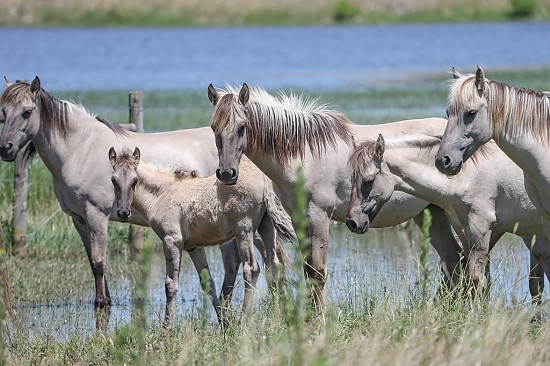
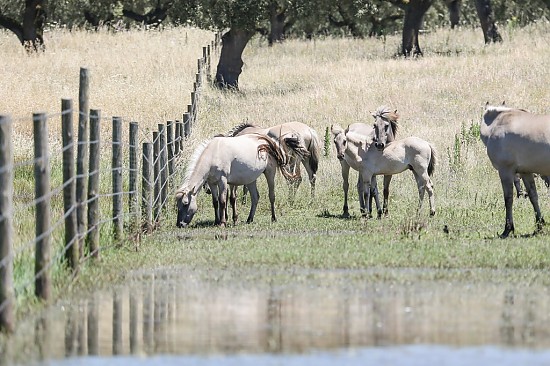
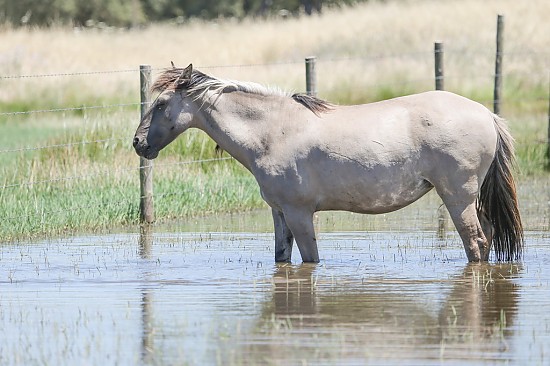
History of the Sorraia Horse
The Sorraia Horse represents an equine population with very particular and unique characteristics, recovered and maintained by Dr. Ruy d’Andrade and his descendants. The name of the horse derives from the fact that it was identified for the first time, by Dr. Ruy d’Andrade, near the Sorraia river, as he himself describes in the following passage:
Many years ago I had already noticed that many foals out of mares of pure Andalusian breeding which I was raising in the Alto Alentejo (Elvas region), and others I had seen in Andalucia and in the region of the Tejo delta, were born with striped, straw-colored coats, especially those of yellow dun or grulla (mouse dun) color; many of whose stripes later disappeared completely as they became grey.
Later, in 1920, on a hunting trip in the region of Coruche, on the lower Sorraia (river), on the ‘Sesmaria’ estate, I saw a herd of ca. 30 individuals, more than half of them were light duns, some were grullas, many with superabundant stripes, and generally in all aspects absolutely wild, or primitive, as if they were a species of zebra, or a hemionus (halfass) species. (…) I then decided to reconstitute this primitive kind of horse, in order to find out if it was indeed the origin of our Andalusian horses (…) I tried to obtain some mares in that area with the same characteristics; I was able to get seven as founding stock of my herd from various herds at Coruche and vicinity.” Ruy d´Andrade (1945)
Ruy d’Andrade’s research on the Iberian horse led him to try and re-establish the primitive Peninsular horse with the intent, from a zoological point of view, of preserving a type of horse that is reminiscent of the ancient wild Iberian horse, from the warm meridional region of the Peninsula.
This horse has existed on the Iberian Peninsula since the Middle Paleolithic and, therefore, is at the origin of the current Puro Sangue Lusitano and Pura Raza Española.
It is the only Portuguese breed recognized as "particularly threatened" in the Agro-Environmental measures, and its status is critical given the risk of extinction attributed by the F.A.O, with less than two hundred heads and fewer than a hundred breeding mares.
The population has been isolated since its foundation, in other words, there have been no new animals introduced for reproduction.

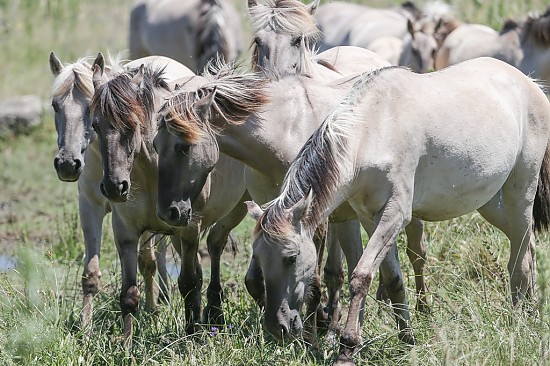
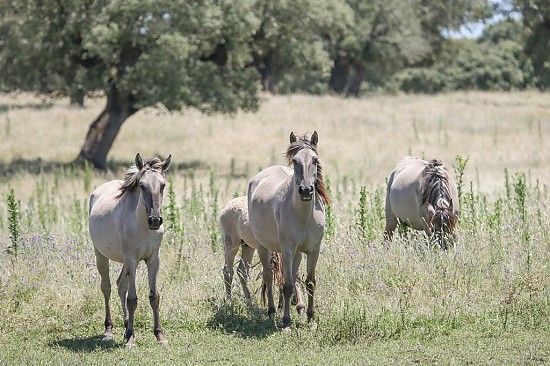
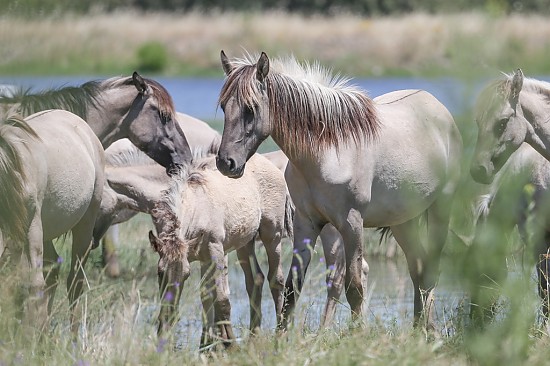
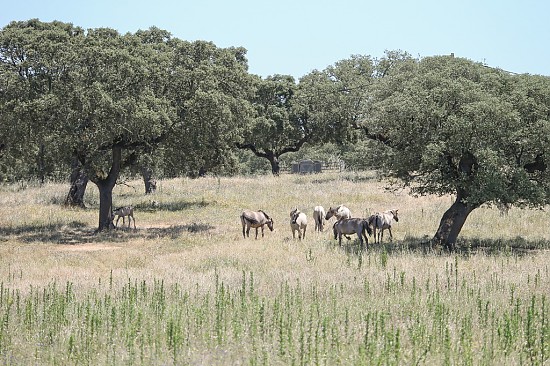
Description of the Sorraia
It is one of the few types of horses that presents primitive characteristics. Its hair is characteristically dun or grulla, the extremities are darker, … as well as various stripes in the … and sometimes on the head, caracteristics assumed as primitive given the vast representation in paleothical paintings.
To defend the thesis of ancestral relationship between the Sorraia Horse with the current Lusitanos and Andaluzians, Ruy d’Andrade refers the fact that many of the foals of these breeds were born with light colours, dun or grayish and very striped, changing colour of the coat with age and, frequently, losing the stripes as an adult, denouncing the ancestral background of these breeds.
Description of the Stud Farm
The original herd, of 3 mares and one stallion, included MACAENSE, who died in 2004 and at the time was the oldest mare of the Sorraia breed. The herd had a good fertility rate and quickly multiplied. The 31 Sorraia horses are semi-wild and roam free-range, divided into a herd of 14 mares and 4 foals, born in 2022, and 2 groups of 8 and 4 stallions also roaming free-range. The stallion runs with the herd of mares up to the time of the birth of the foals.
- Mares : Zara; Zumbaia; Catita; Condessa; Egrégia; Hosana; Hermes; Incógnita; Meias-Brancas: Jasmim; Joia; Orquidea; Opala; Napeia ; Serpentine; Stylish.
- Horses: All the horses are stallions, except for the gelding Oh-No, presently in the Centro Hipico of Portalegre.
Ignaro, bred in the Herdade do Azinhal, is presently the stallion in the re-wilding project in the Quinta do Pisão, Cascais.
Photos
